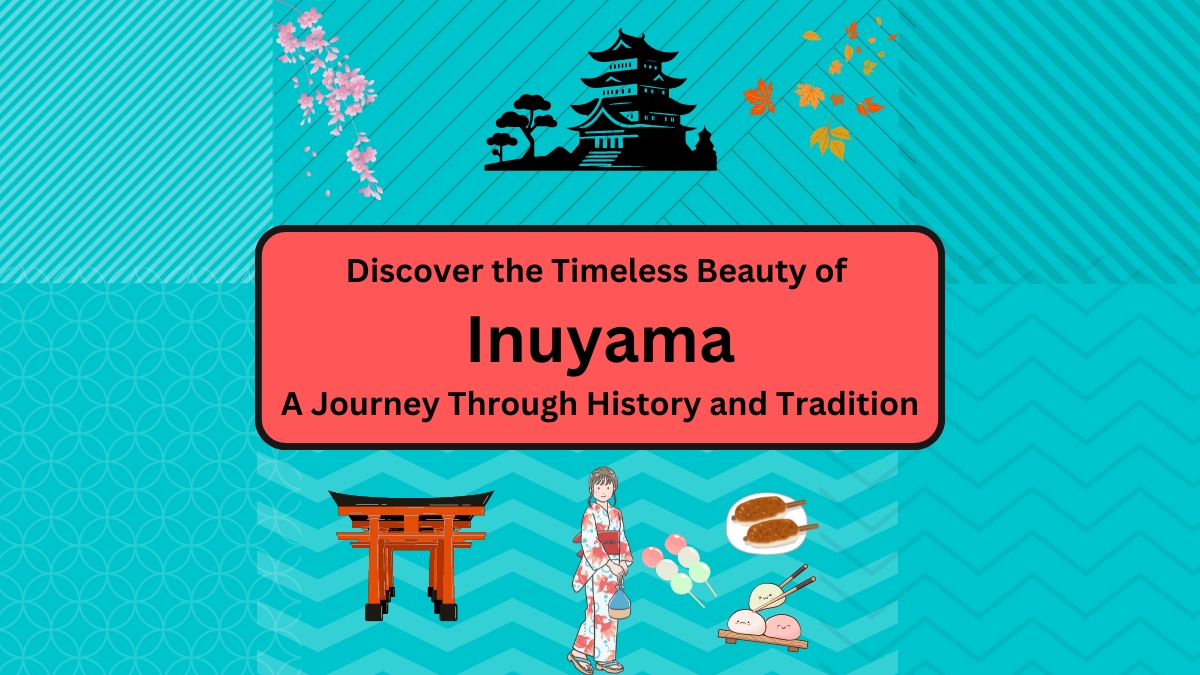Discover the timeless charm of Inuyama, where you can visit the National Treasure Inuyama Castle, stroll through the historic castle town, and witness the ancient art of cormorant fishing on the Kiso River. Extend your adventure to Meiji Mura and Jakko-in Temple for a deeper connection with Japan’s cultural heritage and natural beauty. This journey offers an immersive experience of history and tradition.
1. Inuyama Castle, a National Treasure of Japan|国宝 犬山城
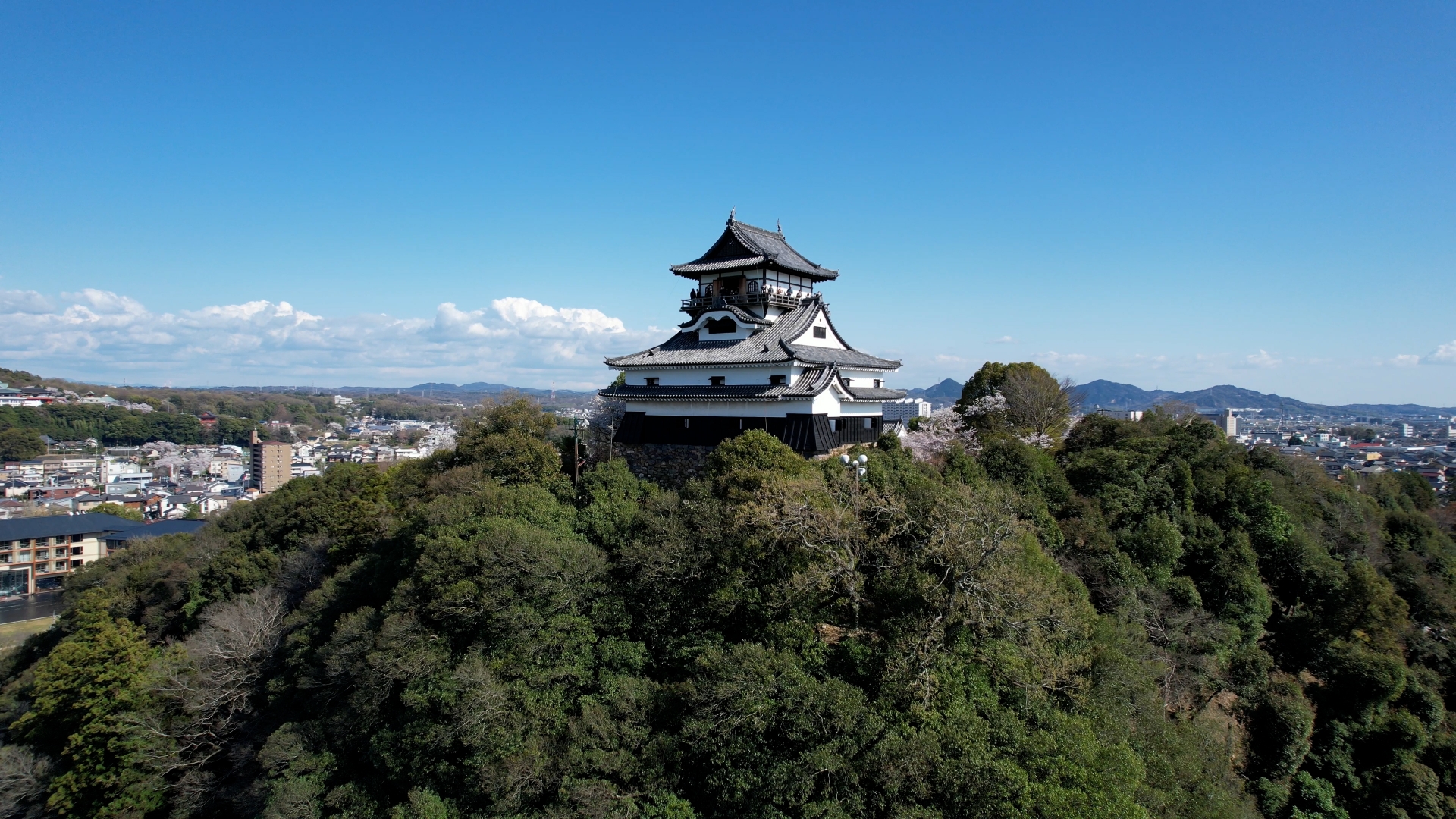
Inuyama Castle, one of Japan’s five designated National Treasure castles, is an iconic historical landmark with origins dating back to 1537. Built by Oda Nobuyasu, the uncle of the famous warlord Oda Nobunaga, the castle is known for having Japan’s oldest surviving keep (donjon). Situated at the crucial strategic point of the Nōbi Plain, Inuyama Castle offers breathtaking panoramic views from the top floor of the keep, where visitors can overlook the Kiso River, the distant Mount Ontake, Gifu Castle, and even the skyline of Nagoya.
Throughout Japan’s warring periods, the castle played a vital role as the Oda, Toyotomi, and Tokugawa clans vied for control over this important stronghold. It is often referred to as “Hakutei Castle” (Castle of the White Emperor) and remains a symbol of power and influence. The castle’s unique history also includes being the only privately owned castle in Japan until it was transferred to a public foundation in 2004.
Visitors can explore the three-story, four-level structure with two underground floors, which exemplifies the “watchtower-style” architecture of the time. Walking through its corridors gives a glimpse of the history and architectural ingenuity of the period. A scenic walk around the nearby Kiso River, the historic Inuyama Castle Town, and other attractions like Meiji Mura enhances the cultural experience.
For those interested in Japan’s feudal past, visiting Inuyama Castle is a journey through time, offering a window into the battles that shaped the nation’s history and an unrivaled view of the region’s natural beauty.
2. Sanko Inari Shrine|三光稲荷神社
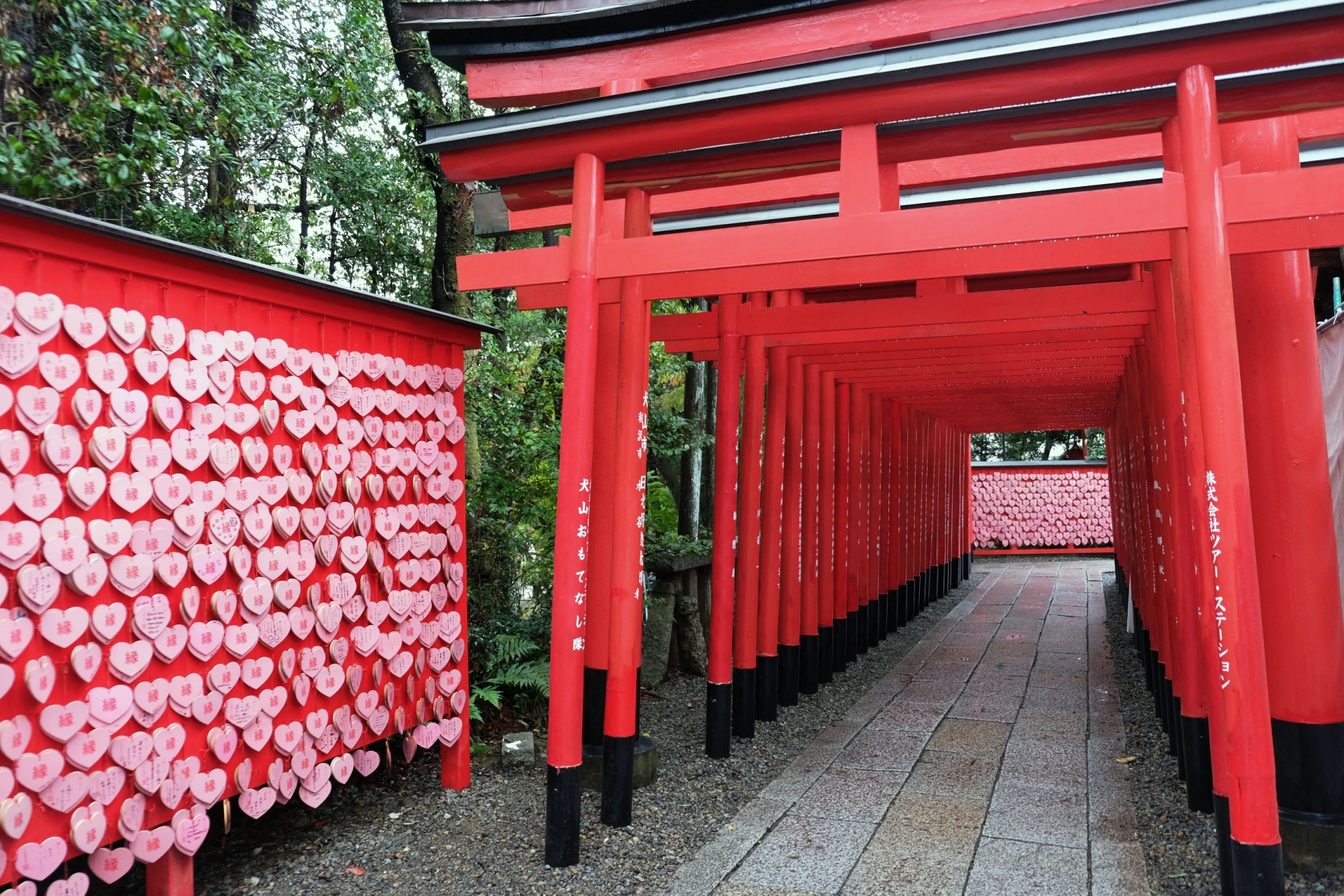
Sanko Inari Shrine is a historic shrine located at the foot of Mount Shiroyama, near Inuyama Castle. It has long been a beloved destination for both locals and visitors. The shrine is famous for its rows of red torii gates that create a striking visual along the path, making it a popular spot for tourists, especially those visiting Inuyama Castle. Sanko Inari Shrine is also known for its charming pink heart-shaped ema (wooden plaques for prayers), which have gained popularity among women seeking blessings for love and relationships.
One of the shrine’s notable traditions is the “Zeniarai,” or money washing ritual, where visitors can place coins in a bamboo strainer, wash them in the sacred water, and pray for financial prosperity. It is believed that this act will multiply the wealth of the worshippers. Additionally, the shrine features a special stone called the “Omokaru Stone.” Visitors can lift the stone while making a wish—if it feels light, the wish is believed to come true.
For those looking for both a cultural experience and a chance to make wishes for prosperity, love, and happiness, Sanko Inari Shrine offers a peaceful and picturesque visit, complete with traditions that bring good fortune to its visitors.
3.Inuyama Castle Town|犬山城下町

Inuyama Castle Town, located at the base of the famous Inuyama Castle, is a charming district that preserves the atmosphere of Japan’s Edo period. Originally developed alongside the construction of the castle, the town was carefully planned to accommodate merchants and artisans, contributing to its economic growth. Today, visitors can walk through streets that retain the same layout from centuries ago, lined with historical buildings from the Edo to Showa eras, creating an authentic and nostalgic experience.
The town’s narrow streets are dotted with traditional merchant houses (machiya), many of which have been converted into stylish cafés, souvenir shops, and restaurants offering local delicacies. One of the town’s specialties is the “kushikatsu” skewers, including handmade “gohei mochi” and sweet rice dumplings, perfect for snacking as you stroll through the scenic streets. The delightful blend of old architecture and modern amenities makes it a wonderful place to relax, shop, and enjoy local flavors.
A must-see in Inuyama Castle Town is the rare occurrence of two National Treasures in one place: Inuyama Castle and Jo-an, a tea room in the nearby Urakuen Garden. These cultural treasures provide a unique glimpse into Japan’s rich history and tea culture. In spring, the town becomes one of the top cherry blossom viewing spots in Aichi Prefecture, with festivals and events filling the streets with vibrant energy.
The Inuyama Festival, held annually in April, is another highlight, where 13 elaborately decorated floats (yama) parade through the town, accompanied by traditional music. The festival showcases the town’s cultural heritage and is a beloved event for locals and tourists alike.
For a unique experience, hop on a rickshaw pulled by performers from Nagoya Yoshimoto, offering a lighthearted tour of the town. You can also explore the many historic wells scattered throughout the area, remnants of the town’s old water system.
Inuyama Castle Town is not only a journey through history but also a place to enjoy traditional Japanese culture in a leisurely setting, making it an unforgettable destination for travelers.
4.Dondenkan, a museum of floats |どんでん館
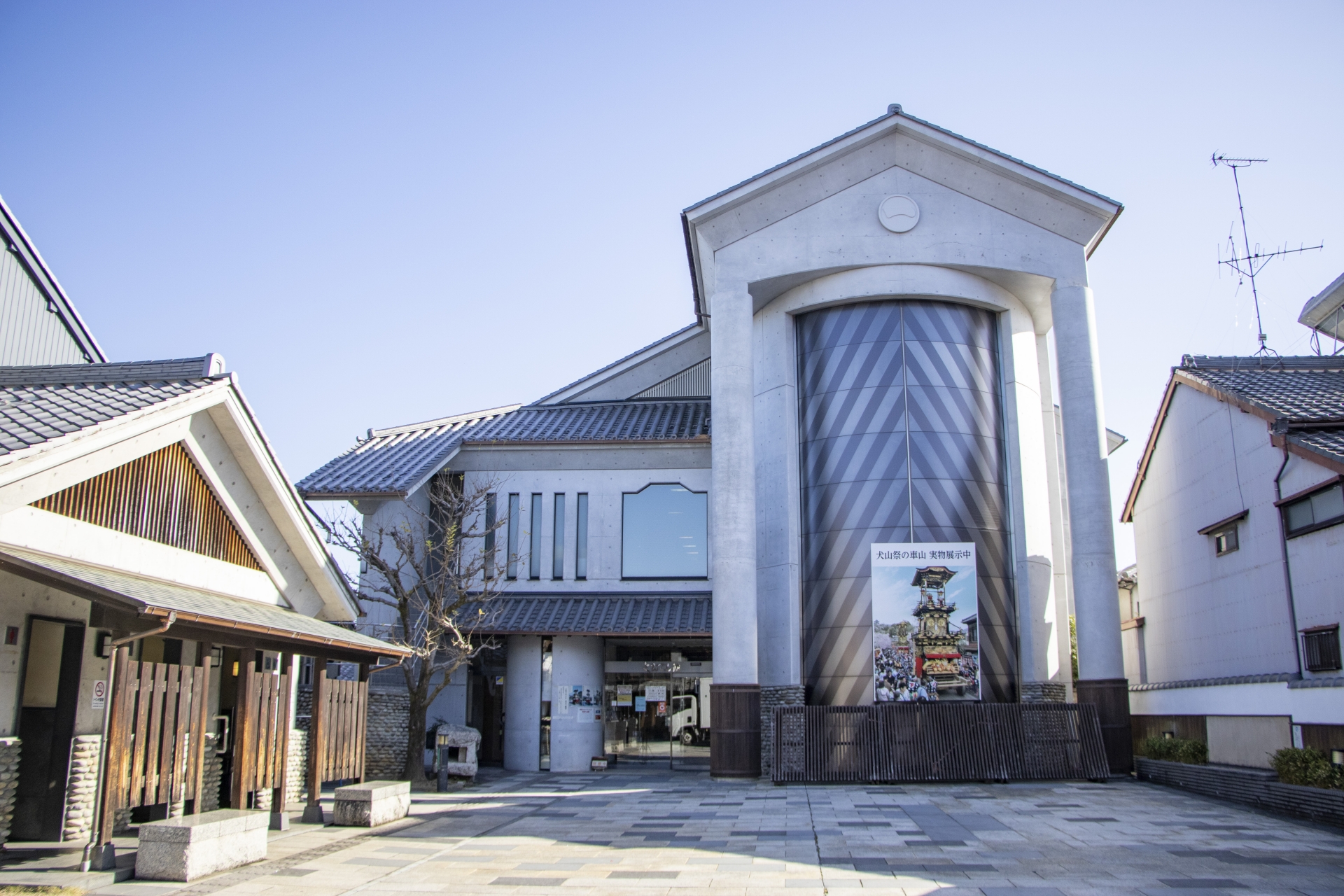
Dondenkan is a must-visit museum located in the historic Inuyama Castle Town, offering visitors a chance to experience the grandeur of the annual Inuyama Festival all year round. The festival, held on the first weekend of April, features magnificent “yama” floats, and Dondenkan displays four of these towering floats, each standing 8 meters tall. These floats are intricately crafted with lacquer and gold leaf, creating a stunning sight that captures the spirit and craftsmanship of the festival.
One of the highlights of Dondenkan is its interactive exhibition, where the atmosphere of the festival is recreated using light and sound effects. In just six minutes, you can experience the energy and excitement of the festival day, complete with the sounds of the festival procession. The name “Dondenkan” is inspired by the impressive maneuver known as “donden,” where the massive floats make dramatic turns at the town’s intersections during the festival.
The building itself is designed in the style of a traditional merchant house (machiya), with narrow frontages and deep interiors, replicating the architecture typical of the castle town. Upon entering, visitors can explore the traditional Japanese-style rooms and open spaces with exposed wooden beams, reminiscent of historical homes in the area.
In addition to the floats, the museum also showcases beautiful embroidered tapestries and costumes worn by children during the festival. These include elaborate gold-thread embroidery that reflects the immense cultural and financial investment made by the local community in preserving their heritage. As dusk falls during the actual festival, the floats are illuminated by hundreds of lanterns, creating a magical and nostalgic atmosphere, and visitors can catch a glimpse of this enchanting sight through photographs displayed on the walls of Dondenkan.
Dondenkan provides a unique cultural experience, allowing visitors to immerse themselves in the history and tradition of the Inuyama Festival while appreciating the stunning craftsmanship and lively atmosphere that define this centuries-old celebration.
5. Kiso River Ukai Boat Tours|木曽川鵜飼遊覧

The Kiso River Ukai (cormorant fishing) is an ancient fishing method, dating back over 1,300 years, where specially trained cormorants (called “umi’u”) catch river fish such as sweetfish (ayu). The fishing takes place on long wooden boats, known as “ubune,” operated by a team of skilled fishermen called “usho.” Each usho manages up to 12 cormorants, guiding them into the water with a hand rope. The birds dive underwater to catch fish, and when they return to the surface, the usho retrieves the fish from their beaks—an impressive and time-honored skill that has captivated audiences for centuries.
One of the unique features of the Kiso River Ukai is the proximity to the action. Visitors aboard viewing boats can get close enough to feel the warmth of the traditional bonfires (kagaribi) used to illuminate the river and attract fish. The boats are so close that you can even feel the splash of water from the cormorants as they swim past, offering a truly immersive experience.
What makes the Kiso River Ukai even more special is the backdrop of the illuminated National Treasure, Inuyama Castle, creating a picturesque and magical atmosphere. The combination of traditional fishing, historical scenery, and the natural beauty of the Kiso River makes this an unforgettable cultural experience.
Visitors can enjoy both day and night tours. The night tours provide a particularly enchanting atmosphere, with the flickering flames of the bonfires reflecting off the water and the graceful movements of the cormorants. For a unique experience, Kiso River Ukai also offers Japan’s only daytime ukai tours, allowing visitors to witness this ancient practice in a different light.
Whether you are watching the expert maneuvering of the fishermen or marveling at the synchronized efforts of the cormorants, the Kiso River Ukai Boat Tours provide a one-of-a-kind glimpse into Japan’s rich cultural heritage, offering an extraordinary experience of tradition and nature.
6. Jakko-in Temple “Maple Temple”|寂光院
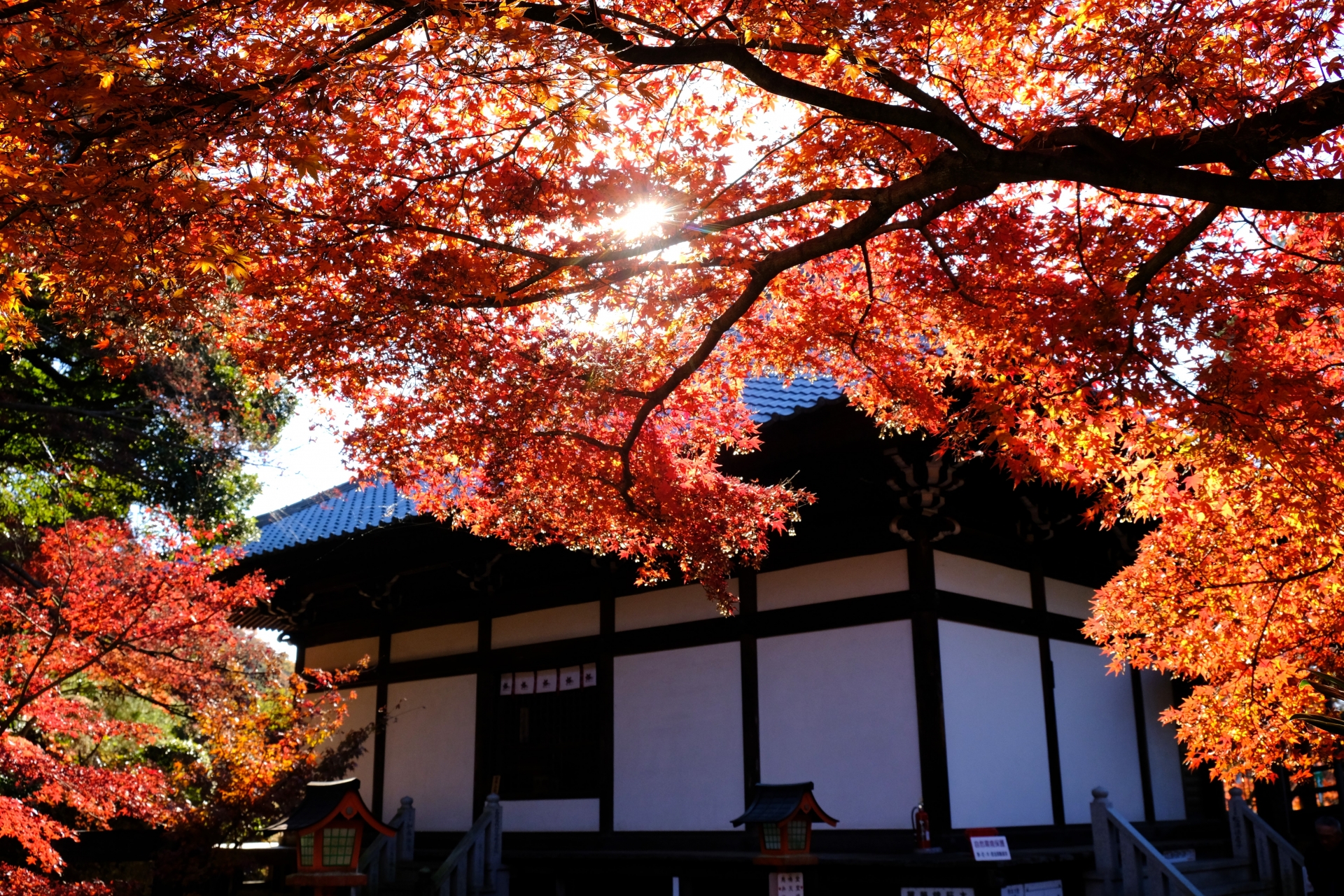
Nestled in the scenic hills of Owari Province, Jakko-in Temple, formerly known as Tsugaosan Hachiyo Rendai-ji Jakko-in, is a serene and historic temple belonging to the Chizan sect of Shingon Buddhism. Established in 654 by Emperor Kōtoku’s decree, Jakko-in has been a revered spiritual site for centuries. The temple is home to a secret statue of the Thousand-Armed Kannon, which is only unveiled every 60 years during the Chinese zodiac year of the Rat.
Jakko-in is famously known as the “Maple Temple of Owari” for its stunning autumn foliage. Around 1,000 maple trees surround the temple grounds, creating a breathtaking display of vibrant reds and oranges in the fall. Thanks to its location along the Kiso River, the trees take on particularly brilliant hues due to the temperature contrasts, offering a visual spectacle for visitors.
The temple’s peaceful atmosphere and cultural significance make it an ideal place for quiet reflection and prayer. The main hall, along with other historical structures like Zuikudo Hall and Bentendo Hall, has been designated as cultural properties. Visitors can also explore the scenic lookout point, which provides sweeping views of Inuyama Castle, Mount Komaki, Gifu Castle, and even the distant Ibuki and Yoro mountain ranges.
Jakko-in is not only a beautiful autumn destination. In spring, the fresh green leaves, often referred to as “aomomiji” (green maples), attract many visitors seeking a refreshing escape. The temple’s grounds also showcase an array of seasonal flowers, from cherry blossoms in March and April to azaleas, irises, and hydrangeas in the summer.
A stroll along the temple’s pathways reveals numerous stone statues of Buddhist deities. These simple yet touching stone figures, including representations of Kōbō Daishi, guide visitors toward the main hall, where they can offer their prayers in a calm, spiritual environment.
Whether admiring the vibrant autumn maples, the fresh spring greenery, or the temple’s historical significance, Jakko-in Temple offers a peaceful retreat and a deep connection to Japan’s rich cultural and religious heritage.
7.Meiji Mura, an Open-Air Museum|博物館明治村

Located on the scenic shores of Iruka Pond in Inuyama, Aichi Prefecture, Meiji Mura is an open-air museum that offers a unique opportunity to step back in time and experience the architectural and cultural heritage of Japan’s Meiji era (1868–1912). Founded in 1965, Meiji Mura was created to preserve the historically significant buildings that were at risk of being lost during Japan’s post-war economic boom. Today, the museum features more than 60 relocated and restored structures from the Meiji period, including residences, schools, factories, and churches.
One of the highlights of the museum is the meticulously reconstructed main entrance of the Imperial Hotel, designed by renowned American architect Frank Lloyd Wright in 1923. The hotel’s intricate use of Oya stone and geometric terracotta designs make it a stunning example of early modern architecture in Japan. The restoration of this architectural gem took 17 years and remains a popular attraction for visitors.
Meiji Mura is more than just a collection of historical buildings. Visitors can immerse themselves in the daily life and culture of the Meiji era through various exhibits, including period furniture, artifacts, and educational displays about the rapid modernization that transformed Japan during this period. The museum also serves as a filming location for movies and television shows, adding to its appeal.
A visit to Meiji Mura wouldn’t be complete without trying some of the unique “Meiji Gourmet” dishes available at the museum. Visitors can savor traditional foods such as “gyu-nabe” (beef hotpot) and “korokke” (croquettes), recreating the flavors that defined Japan’s transition into the modern world. Don’t forget to sample the iconic “Denki Bran,” Japan’s first cocktail, which was created during this time.
With its expansive grounds and variety of buildings, it’s recommended that visitors plan their route ahead of time. Exploring all the important cultural properties alone can take about three and a half hours, while focusing on Western architecture will require around three hours. There are also shorter two-hour routes that highlight buildings associated with famous figures such as Natsume Soseki.
Throughout the year, Meiji Mura’s natural setting is alive with the changing seasons. Cherry blossoms in the spring, vibrant summer greenery, and autumn foliage all contribute to the beauty of the village. The museum provides an enriching and scenic cultural experience, offering a glimpse into the architectural achievements and historical development of the Meiji era in Japan.
